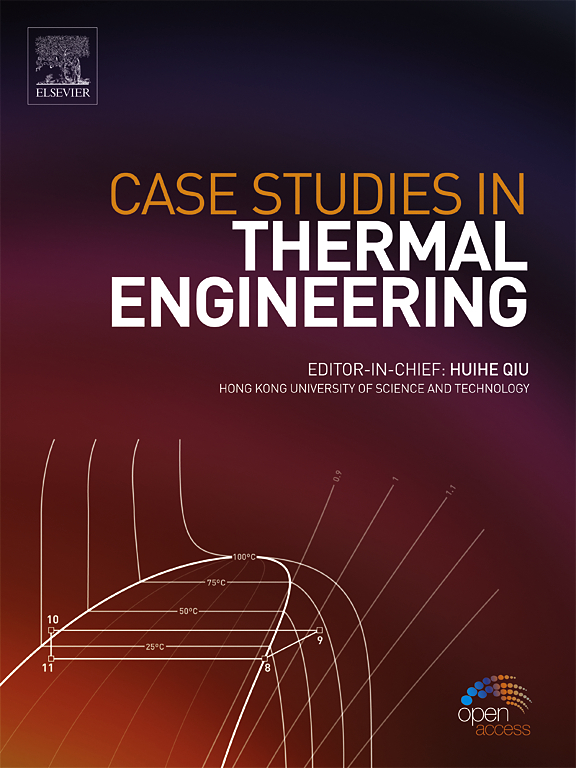A molecular dynamic study of the boiling heat transfer on a liquid metal surface with different thicknesses
IF 6.4
2区 工程技术
Q1 THERMODYNAMICS
引用次数: 0
Abstract
The impact of the thickness on the boiling phenomena of the water film on the liquid metal surface is compared, and various mechanisms are analyzed, using a molecular dynamics simulation. The findings demonstrated that the best heat transfer performance between the liquid metal surface and water film is obtained when employing a thickness of 9.56 Å, along with a shorter boiling time. Additionally, the boiling time on each surface was further accurately characterized by considering and examining the water film motion and the temperature distribution, in addition to comparing the kinetic energy and potential energy of the system. Also, the surface thickness affected the fluctuation of the liquid metal, the interfacial thermal conductance, and the interfacial thermal resistance. The thicker the liquid metal, the greater the fluctuation. However, a liquid metal surface with a thickness of 9.56 Å is characterized by a larger average interfacial thermal conductance, a smaller average interfacial thermal resistance. Based on the analysis, the difference in boiling time among the different cases was due to the combined effect of fluctuation, interfacial thermal conductance, and interfacial thermal resistance. The results enlighten new ideas and methods for augmenting the efficiency of boiling heat transfer.不同厚度液态金属表面沸腾传热的分子动力学研究
通过分子动力学模拟,比较了厚度对液态金属表面水膜沸腾现象的影响,并分析了各种机理。研究结果表明,当采用 9.56 Å 厚度时,液态金属表面与水膜之间的传热性能最佳,同时沸腾时间更短。此外,通过考虑和研究水膜的运动和温度分布,以及比较系统的动能和势能,进一步精确地确定了每个表面的沸腾时间。此外,表面厚度也会影响液态金属的波动、界面热导率和界面热阻。液态金属越厚,波动越大。然而,厚度为 9.56 Å 的液态金属表面的特点是平均界面热导率较大,平均界面热阻较小。根据分析,不同情况下沸腾时间的差异是波动、界面热导率和界面热阻共同作用的结果。这些结果为提高沸腾传热效率提供了新的思路和方法。
本文章由计算机程序翻译,如有差异,请以英文原文为准。
求助全文
约1分钟内获得全文
求助全文
来源期刊

Case Studies in Thermal Engineering
Chemical Engineering-Fluid Flow and Transfer Processes
CiteScore
8.60
自引率
11.80%
发文量
812
审稿时长
76 days
期刊介绍:
Case Studies in Thermal Engineering provides a forum for the rapid publication of short, structured Case Studies in Thermal Engineering and related Short Communications. It provides an essential compendium of case studies for researchers and practitioners in the field of thermal engineering and others who are interested in aspects of thermal engineering cases that could affect other engineering processes. The journal not only publishes new and novel case studies, but also provides a forum for the publication of high quality descriptions of classic thermal engineering problems. The scope of the journal includes case studies of thermal engineering problems in components, devices and systems using existing experimental and numerical techniques in the areas of mechanical, aerospace, chemical, medical, thermal management for electronics, heat exchangers, regeneration, solar thermal energy, thermal storage, building energy conservation, and power generation. Case studies of thermal problems in other areas will also be considered.
 求助内容:
求助内容: 应助结果提醒方式:
应助结果提醒方式:


